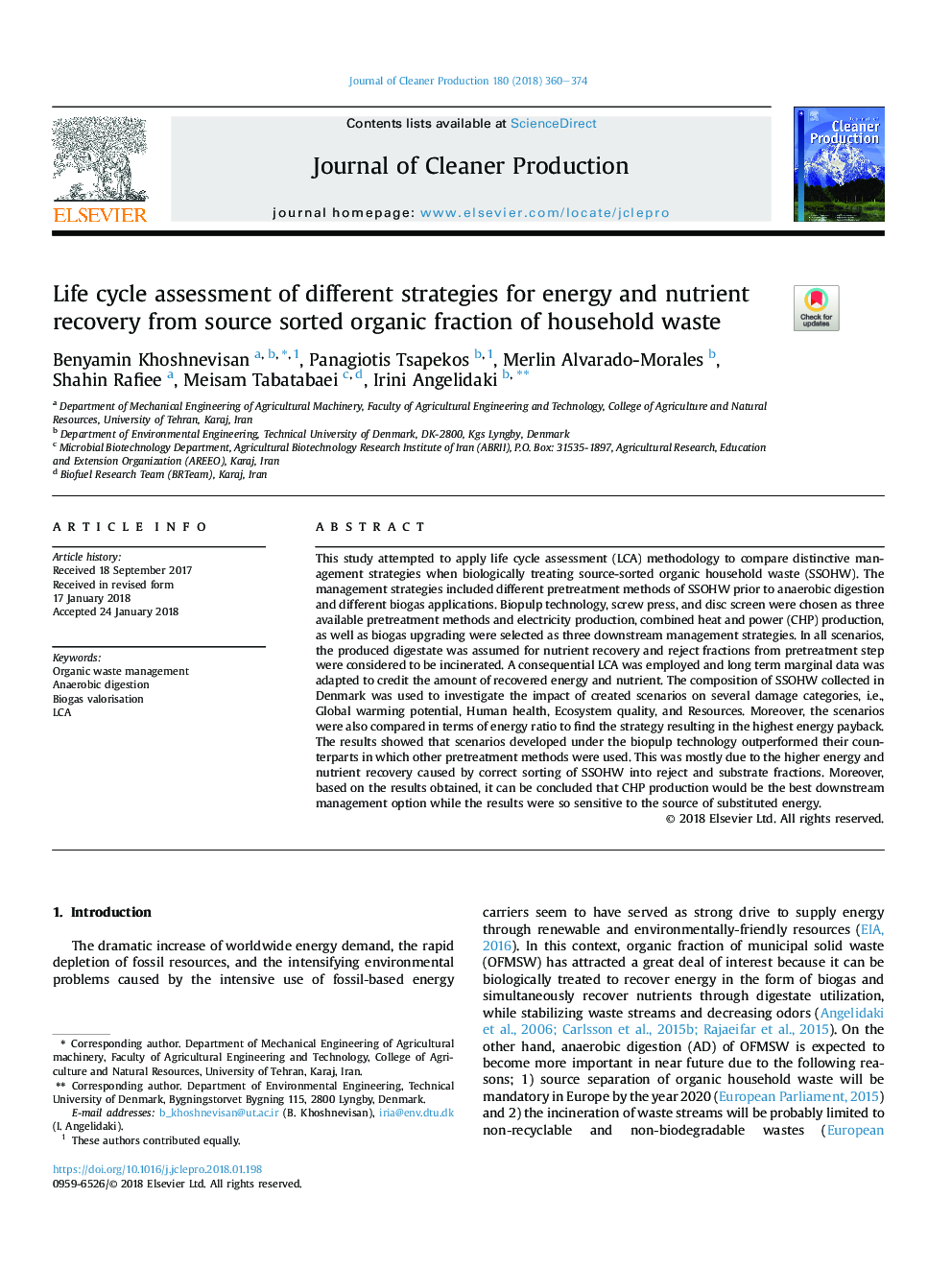| Article ID | Journal | Published Year | Pages | File Type |
|---|---|---|---|---|
| 8097936 | Journal of Cleaner Production | 2018 | 15 Pages |
Abstract
This study attempted to apply life cycle assessment (LCA) methodology to compare distinctive management strategies when biologically treating source-sorted organic household waste (SSOHW). The management strategies included different pretreatment methods of SSOHW prior to anaerobic digestion and different biogas applications. Biopulp technology, screw press, and disc screen were chosen as three available pretreatment methods and electricity production, combined heat and power (CHP) production, as well as biogas upgrading were selected as three downstream management strategies. In all scenarios, the produced digestate was assumed for nutrient recovery and reject fractions from pretreatment step were considered to be incinerated. A consequential LCA was employed and long term marginal data was adapted to credit the amount of recovered energy and nutrient. The composition of SSOHW collected in Denmark was used to investigate the impact of created scenarios on several damage categories, i.e., Global warming potential, Human health, Ecosystem quality, and Resources. Moreover, the scenarios were also compared in terms of energy ratio to find the strategy resulting in the highest energy payback. The results showed that scenarios developed under the biopulp technology outperformed their counterparts in which other pretreatment methods were used. This was mostly due to the higher energy and nutrient recovery caused by correct sorting of SSOHW into reject and substrate fractions. Moreover, based on the results obtained, it can be concluded that CHP production would be the best downstream management option while the results were so sensitive to the source of substituted energy.
Related Topics
Physical Sciences and Engineering
Energy
Renewable Energy, Sustainability and the Environment
Authors
Benyamin Khoshnevisan, Panagiotis Tsapekos, Merlin Alvarado-Morales, Shahin Rafiee, Meisam Tabatabaei, Irini Angelidaki,
